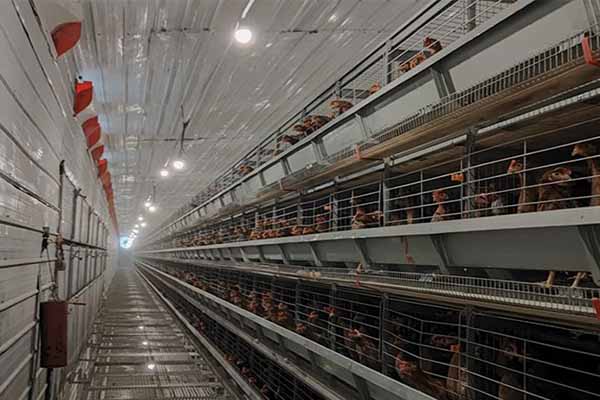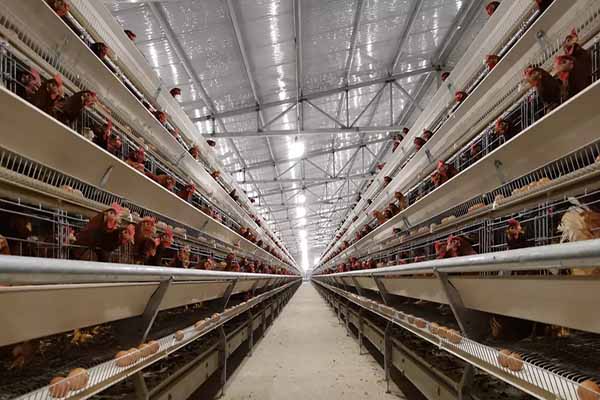Broiler Chicken Cages for 10000 Birds: Design, Specifications, and Management Strategies
Time : 2025-06-30
Broiler chicken farming has seen a significant growth over the years, especially with the increasing demand for meat worldwide. To meet the high production requirements of large-scale broiler chicken operations, it is crucial to invest in efficient and well-designed equipment, including broiler chicken cages. In this article, we will delve into the design, specifications, and management strategies for broiler chicken cages capable of housing up to 10,000 birds. By understanding these aspects, farmers and industry professionals can make informed decisions to optimize their operations.

Introduction to Broiler Chicken Cages
Broiler chicken cages are an integral part of the broiler chicken farming system. These cages provide a controlled environment for the birds, ensuring their health, growth, and productivity. Properly designed cages contribute to better overall performance and minimize the risk of disease outbreaks. When planning for a setup that can accommodate up to 10,000 birds, it is essential to consider various factors to ensure a successful and profitable operation.
Design Considerations for Broiler Chicken Cages
Space Allocation
The space provided per bird is a critical factor in cage design. For 10,000 birds, each bird should have a minimum of 3 to 4 square feet of space to move around. This space allows the birds to maintain good health and prevent stress. Overcrowding can lead to increased mortality rates, poor meat quality, and disease transmission.
Cage Dimensions
The dimensions of the cages should be designed to maximize the space for the number of birds. Standard cages for broilers are usually around 4 feet in length, 2 feet in widt h, and 3.5 feet in height. These dimensions provide enough space for the birds to grow and move without causing any harm to each other.
h, and 3.5 feet in height. These dimensions provide enough space for the birds to grow and move without causing any harm to each other.
Cage Materials
High-quality, durable materials are essential for broiler chicken cages. The preferred material is often galvanized steel, as it is resistant to corrosion and withstands the constant movement of the birds. Other materials, such as stainless steel or powder-coated metal, can also be used to ensure long-lasting cages.
Slatted Floors
Slatted floors are commonly used in broiler chicken cages to prevent the build-up of droppings. These floors are made of steel bars and provide excellent ventilation, reducing the risk of ammonia buildup, which can be harmful to the birds. Slatted floors also facilitate the collection of manure for easier waste management.
Specifications for 10000-Bird Broiler Chicken Cages
Cage Capacity
Designing cages for 10,000 birds requires careful planning. Each cage should accommodate a certain number of birds based on the species, age, and size of the birds. A standard cage may hold between 20 to 30 birds, depending on the size. Therefore, around 333 to 500 cages would be needed to accommodate 10,000 birds.
Feeders and Drinkers
Feeders and drinkers should be strategically placed within the cages to ensure that all birds have access to food and water. For 10,000 birds, a sufficient number of feeders and drinkers should be installed, taking into account the birds’ growth stages. Automatic feeders and drinkers can save labor and provide accurate feeding and watering.
Airflow and Ventilation
Proper airflow and ventilation are crucial for maintaining optimal conditions within the broiler chicken cages. Adequate ventilation prevents heat stress and the build-up of harmful gases. Cages should be equipped with fans, vents, and a system to exchange air regularly to ensure the health and comfort of the birds.
Management Strategies for Broiler Chicken Cages
Health Monitoring
Regular health monitoring is essential for maintaining a disease-free environment in broiler chicken cages. Implementing biosecurity measures, such as controlling access to the facility and regularly cleaning and disinfecting the cages, can prevent disease outbreaks.
measures, such as controlling access to the facility and regularly cleaning and disinfecting the cages, can prevent disease outbreaks.
Temperature Control
Broilers are sensitive to temperature fluctuations. A well-designed ventilation system and temperature control unit should be in place to regulate the internal temperature of the cages. This ensures the birds stay comfortable throughout their growth cycle.
Feeding and Watering
The feeding and watering process should be efficient and consistent. Automatic feeders and drinkers ensure that all birds receive adequate nutrition and hydration, promoting optimal growth and productivity.
Conclusion
Investing in well-designed broiler chicken cages for 10,000 birds can significantly improve the productivity and profitability of a broiler chicken farm. By considering the design, specifications, and management strategies outlined in this article, farmers and industry professionals can create an environment that promotes the health and well-being of the birds, ultimately leading to successful broiler chicken production.











